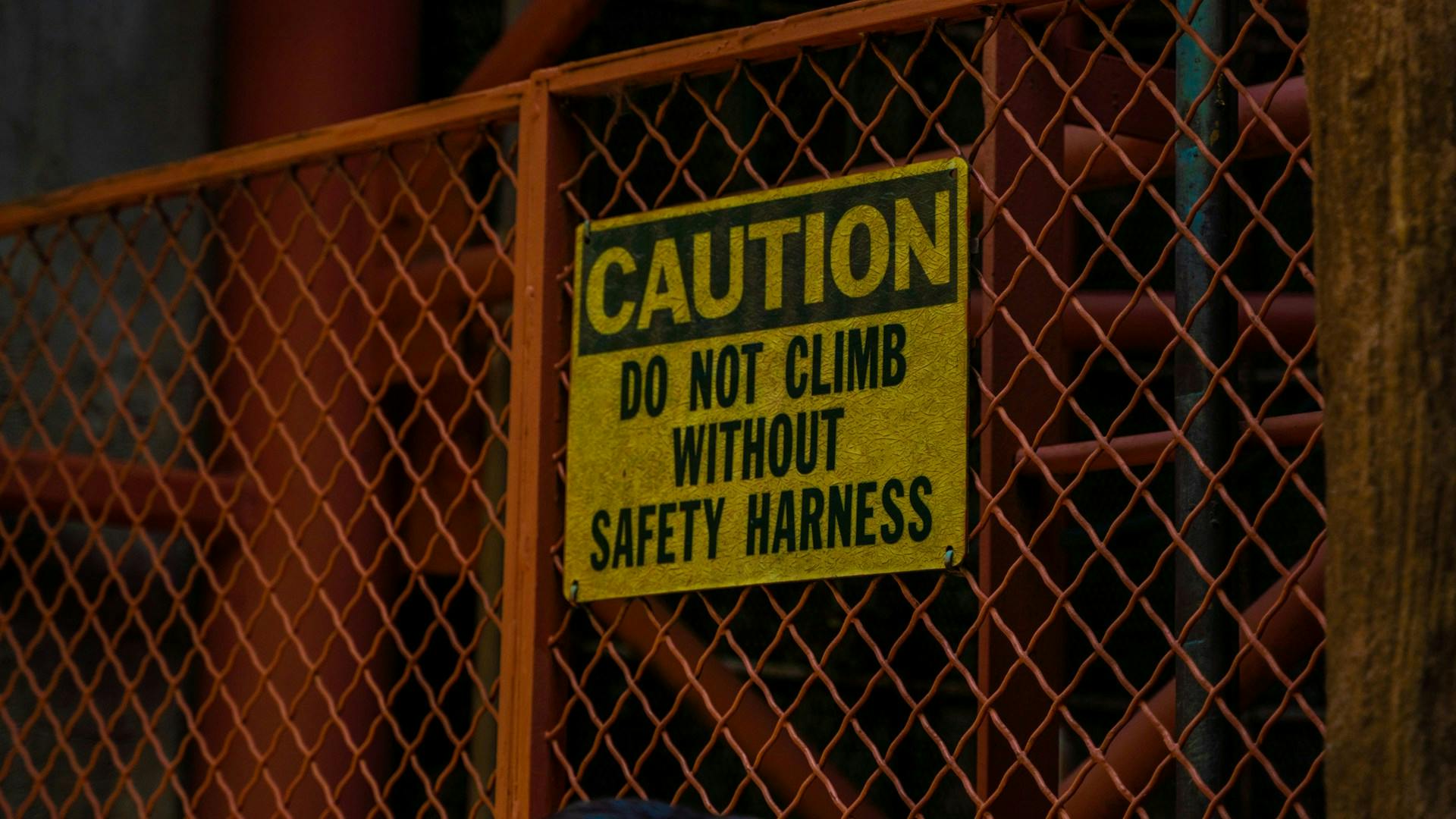Guide to Effective OSHA Incident Reporting


When a workplace incident happens, the actions taken immediately afterward set the tone for employee safety and organizational responsibility. Effective incident reporting shapes a company's safety culture by emphasizing clear documentation, timely responses, and a commitment to prevention.
Too often, incident reports become routine tasks performed solely for compliance purposes. Treating them this way can lead to overlooked risks, recurring injuries, and reduced trust within your workforce.
This guide provides a comprehensive look at effective OSHA incident reporting, outlining exactly what you should document, best practices for accurate submissions, and why thorough reporting is crucial beyond just regulatory compliance.
The Importance of the OSHA Incident Report
Accurate incident reporting is one of the most powerful tools for maintaining a safe workplace. It’s not just about checking a box for compliance, it’s about gaining visibility into the real conditions your teams face and using that insight to prevent harm.
Done well, incident reporting delivers real, lasting benefits:
- A Stronger Safety Culture: When employees know incidents will be taken seriously, they’re more likely to report hazards and speak up.
- Root Cause Analysis: Detailed reports help safety teams uncover why an incident occurred, not just what happened.
- Risk Mitigation: Data reveals patterns, enabling proactive fixes before problems escalate.
- Regulatory Compliance: Meeting OSHA requirements keeps your business inspection-ready and avoids costly penalties.
- Legal Protection: Well-documented reports serve as proof of your safety efforts if your organization ever faces legal scrutiny.
- Better Internal Audits: Consistent reporting provides a clear paper trail for safety teams and leadership to review.
- Reduced Costs: Fewer incidents mean less downtime, fewer workers' comp claims, and lower operating costs.
On the flip side, poor reporting creates blind spots. OSHA considers inaccurate or incomplete records a violation, even if unintentional, and these errors can lead to fines or preventable injuries. Misreporting also masks underlying issues that might otherwise be addressed before they escalate.
OSHA’s Final Rule on Workplace Injury and Illness Reporting now requires many companies in high-hazard industries to submit detailed reports electronically. This shift emphasizes the growing importance of accurate, timely data.
In short, the OSHA incident report is more than a regulatory requirement. It's a tool for learning, improving, and protecting your workforce while building a safer, more resilient organization.
Core Elements of an OSHA Incident Report
A complete and accurate OSHA incident report is essential for both compliance and workplace safety. Each report should include the following details:
- Business name
- Names of affected employees
- Location and time of the incident
- Brief description of what happened
- Job titles of affected employees
- Date the injury or illness began
- Specific location where the incident occurred
- Nature of the injury or illness
- Body parts affected
- Objects or substances that caused the injury
- Treatment provided
- Whether the incident led to days away from work, job transfer, or work restrictions
These details are entered into OSHA Form 301, the Injury and Illness Incident Report. This form captures the specifics of each recordable work-related incident and provides the foundation for meaningful safety analysis.
Clarity and precision matter. For example, instead of writing “cut,” specify “deep laceration on left hand requiring stitches.” For the cause of the injury, say “rotating blade on Model XYZ cutting machine” rather than simply “machinery.” These descriptions provide context that helps identify real hazards.
Treatment details should be just as specific. Include whether first aid was provided on-site or if the employee was transported to a hospital. These distinctions affect how incidents are classified and how follow-up actions are planned.
It's also important to record whether the incident resulted in time away from work or changes to the employee’s duties. These data points help determine the severity of the incident and inform future prevention strategies.
Remember, the purpose of these reports isn’t just to comply with regulations. They help tell the full story of what happened, why it happened, and how similar events can be avoided in the future. Accurate reporting leads to better decision-making, more effective safety protocols, and ultimately, a safer workplace for everyone.
Always consult the official OSHA Recordkeeping guidelines to ensure your reports meet the most up-to-date requirements.
Steps to Take Following a Workplace Incident and Filing an OSHA Incident Report
When a workplace accident occurs, fast and accurate action is critical. The steps you take immediately after an incident shape the quality of your records and the effectiveness of your response. Here's a step-by-step breakdown of what to do:
1. Gather Essential Information
Start by collecting the basic details:
- Business name
- Names of affected employees
- Time and location of the incident
- Brief description of what happened
- Job titles of affected employees
- Date the injury or illness began
- Specific location where the incident occurred
This information forms the foundation of your OSHA incident report. It's best to gather information for your incident log within 24 hours, while details are still fresh.
Using mobile tools can make this process easier. Platforms that capture photos, voice notes, or digital forms help document the scene quickly and accurately before anything changes. While gathering evidence, secure the area to prevent further injury.
It’s important to note that securing the scene is not about assigning blame. It’s about identifying root causes and creating accurate records that protect everyone involved.
2. Document Injury or Illness Details
Next, record the medical and situational details:
- Nature of the injury or illness
- Body parts affected
- Objects or substances involved
- Type of treatment provided
- Whether the employee missed work
- Whether the employee was placed on job restrictions or reassigned
Medical documentation strengthens the report. Include treatment records, return-to-work notes, and any relevant assessments. These details clarify the severity of the injury and help determine the right course of action.
For chemical exposures or respiratory conditions, include the duration of exposure and any personal protective equipment used. Photos of injuries or equipment (with proper consent) can also provide valuable context.
3. Complete OSHA Form 301
Fill out OSHA Form 301 (English version, Spanish version) with the following:
- Employee information
- Healthcare provider details (if treatment was provided)
- Description of how the injury occurred
- What the employee was doing before the incident
- What object or substance caused the injury
This form provides a detailed account of the incident. Use clear, factual language. Instead of writing “employee was injured,” write “employee’s right hand contacted the rotating belt while adjusting tension.”
Avoid making assumptions or placing blame. Focus on observable details. Include any contributing environmental factors such as poor lighting, high noise levels, or slippery surfaces. Note whether the employee was performing routine duties or an unusual task, and whether they had received training for it. These specifics support future prevention strategies.
4. Update the OSHA 300 Log
Once Form 301 is complete, enter the case into your OSHA 300 Log (same links as previous section). Each log entry should include:
- Case number
- Employee name
- Job title
- Date of injury or illness
- Location of incident
- Brief injury description
- Classification of the case
- Number of days away from work (if applicable)
- Number of days on job transfer or restriction (if applicable)
This log serves as your ongoing record of workplace injuries and illnesses. Be consistent in your terminology to support long-term trend analysis.
Update entries as case details evolve. For example, if an employee initially returns to work with restrictions but later requires time off, revise the entry accordingly. Do not erase previous entries. Draw a line through the outdated information and write the corrected details.
Review the log regularly—at least quarterly—to verify accuracy. Train more than one team member on how to maintain the log so the process remains consistent during staffing changes.
For privacy-sensitive cases, replace the employee’s name with the phrase “privacy case.”
5. Report Severe Incidents to OSHA
Some incidents require immediate reporting to OSHA:
- Fatalities must be reported within 8 hours
- In-patient hospitalizations, amputations, and eye losses must be reported within 24 hours
To report, call OSHA’s hotline or use their online reporting system. Be ready to share:
- Business name
- Time and location of the incident
- Type of incident
- Number of employees involved
- Contact details for the person reporting
Make a note of the OSHA representative's name and any case number provided.
It’s important to understand OSHA’s definitions. “Hospitalization” means formal admission to in-patient care, not just an overnight stay. Even short hospital stays for observation must be reported. The term “amputation” includes partial fingertip losses, not just full limb removal.
If you do not have all the details at the time of the report, do not wait. Report the facts you have and provide updates as needed.
The sooner an incident is documented, the more accurate the information will be. Following these steps allows your organization to respond effectively, meet legal requirements, and prevent future incidents with confidence.
Understanding OSHA Incident Reporting and Recordkeeping Requirements
OSHA’s recordkeeping requirements are more than just formalities. They ensure that workplace injuries and illnesses are documented in a way that promotes accountability, transparency, and prevention. To stay compliant, employers need to understand the required forms, how long to retain them, who must submit them, and the deadlines involved.
OSHA Forms
OSHA uses three primary forms to track workplace incidents. We mentioned these forms in the previous section, however let's take a look at what exactly each of them is about.
- Form 300 is the log where all work-related injuries and illnesses are recorded throughout the year. It includes basic details like the employee's name, job title, and a brief description of the incident. This log helps identify patterns and emerging risks.
- Form 301 captures a detailed account of each incident. It outlines what happened, how it happened, what part of the body was affected, and what treatment was provided. This form provides the depth needed for internal reviews and OSHA analysis.
- Form 300A summarizes the year’s injury data and must be posted where employees can see it from February through April. It includes totals for recordable cases, days away from work, and restricted duty incidents.
Many businesses now use software to manage these records efficiently, though paper forms are still acceptable if maintained properly.
Record Retention and Posting Requirements
All OSHA recordkeeping forms must be retained for at least five years following the calendar year they cover. During that period, they must remain accessible to employees, former employees, and authorized representatives. Current employees are entitled to same-day access, while former employees must be granted access within three business days of the request.
Posting requirements are also specific. Form 300A must be displayed in a location that employees regularly access, such as a break room or near time clocks. Employers operating in multiple facilities must maintain and post records separately for each location.
If your business uses electronic storage, ensure proper backup systems are in place to prevent data loss during the retention period. If ownership changes, the records must be transferred to the new owner.
Some injuries are considered privacy cases and must be handled accordingly. These include sexual assaults, mental illnesses, HIV infections, needlestick injuries, and other sensitive conditions. In such cases, substitute the employee’s name with the phrase “privacy case” on public-facing logs.
Electronic Submission Requirements
Starting in 2025, OSHA will require expanded electronic submission of injury and illness data. The requirements vary based on company size and industry classification:
- Workplaces with 250 or more employees must submit detailed records for each recordable incident, including Forms 300, 300A, and 301.
- Workplaces with 100 or more employees in high-hazard industries must submit the same three forms.
- Workplaces in high-risk industries with 20 to 249 employees are required to submit Form 300A only.
Employers can use OSHA’s Injury Tracking Application (ITA) to submit data in one of three ways: manual web form entry, CSV file upload, or direct API integration with recordkeeping systems. Each method includes formatting checks to ensure data accuracy.
Submitted records become part of the public domain, with personal identifiers removed. This transparency allows for industry benchmarking but also exposes injury rates to competitors, potential hires, and customers. Many companies review their DART rates (Days Away, Restricted, or Transferred) before submission, as rates above the industry average can trigger OSHA inspections.
State plan jurisdictions may have additional or slightly different requirements. Always verify with your state’s OSHA office.
Coverage and Exemptions
Most employers with more than ten employees are required to maintain OSHA records, but exemptions exist for certain low-risk industries. These exemptions apply to sectors with historically low injury rates, such as retail, education, finance, and insurance.
Even exempt employers must report severe incidents directly to OSHA, including fatalities, hospitalizations, amputations, and eye losses.
Special cases include:
- Self-employed individuals, family-only farms, and religious organizations engaged in religious activities are fully exempt from both reporting and recordkeeping.
- Partial-year employers must maintain records for the months they were in operation.
- Temporary workers' injuries must be logged by the controlling employer, not the staffing agency.
- Multi-employer worksites must coordinate closely to determine which employer is responsible for each recordable injury.
- Government agencies must follow the same rules as private employers, although some may use additional or separate internal systems.
Proper classification of workers is essential, as it affects both reporting requirements and how other labor regulations apply.
Reporting Timeframes
OSHA enforces strict timelines for reporting serious workplace incidents:
- Fatalities must be reported within 8 hours of learning about the incident.
- In-patient hospitalizations, amputations, and eye losses must be reported within 24 hours.
These timelines begin not at the moment the incident occurs but when a supervisor or manager is made aware of it. Employers must make reasonable efforts to verify facts before reporting, but uncertainty should not delay notification beyond the deadline.
OSHA defines “hospitalization” as formal admission to an in-patient service, not necessarily an overnight stay. Even brief admissions for observation qualify. Similarly, “amputation” includes partial fingertip loss, not just full limb removal.
Weekend and holiday incidents must still be reported promptly using OSHA’s 24-hour hotline or online system. Delays due to scheduling are not accepted. State plan jurisdictions may have stricter timelines.
Late reporting is usually categorized as an "other-than-serious" violation unless it's part of a pattern or appears intentional.
Importance of Accuracy
Accurate records are vital for identifying safety gaps, improving training, and reducing future incidents. OSHA considers falsification or underreporting to be serious violations, often leading to heavy fines.
To maintain data quality:
- Conduct internal audits regularly to verify proper classification of cases.
- Establish standardized investigation protocols to ensure consistency across teams.
- Train multiple staff members on OSHA’s recordkeeping rules to ensure continuity.
- Use software with built-in logic to guide classification and reduce errors.
- Schedule annual refresher sessions before the reporting season begins.
Many companies find that reviewing records quarterly or monthly prevents backlogs and errors. OSHA compliance officers may review these records during inspections, so establishing strong internal processes pays off in both safety outcomes and legal readiness.
Filing the OSHA Incident Report
OSHA gives you several ways to submit reports:
1. Online submission
2. Phone reporting
3. Mail-in forms
For serious incidents that can't wait, call OSHA's 24/7 hotline. This line accepts reports of fatalities, hospitalizations, amputations, and eye losses—all of which have strict reporting deadlines.
Also remember to be careful—electronic submissions can't be changed once they're in OSHA's system. This makes accuracy important before you hit "submit." Keep in mind:
- Report too little, and you risk compliance violations
- Report too much, and you might trigger unnecessary regulatory attention
- Report inaccurately, and your company's reputation could suffer, especially since this data becomes public
Transform Your Safety Reporting with the OSHA Incident Report
The OSHA incident report is more than a compliance document. It's a tool for building safer workplaces, identifying risks early, and preventing recurring incidents. Throughout this guide, we’ve explored how strong reporting practices—from immediate data capture to accurate form submission—can reduce injuries, lower costs, and improve overall safety culture.
But for many companies, even the best reporting protocols can break down without the right tools. Employees often lack access to desktops, don’t have time to fill out complex forms, or are unsure how to submit the information OSHA requires. These gaps delay reporting, reduce accuracy, and weaken your ability to respond.
Yourco is designed to solve exactly these challenges. With Yourco, workers can report incidents the moment they happen using a simple text message. They can attach photos directly from their phone, providing immediate visual evidence that adds clarity and context to the report. Supervisors and safety leads can also send customized forms via SMS, making it easy to collect structured information without relying on apps, portals, or desktop logins.
This approach removes the friction from frontline reporting. It ensures that critical details are captured while memories are fresh, and it keeps your safety data flowing in real time.
Yourco doesn’t just help you meet OSHA requirements—it helps you act faster, respond better, and create a culture where reporting is accessible to everyone. And with built-in analytics, Yourco gives safety leaders immediate visibility into reporting trends across teams, locations, and incident types. This allows you to spot patterns, measure response times, and take proactive steps based on real data—not just gut instincts.
The result? Smarter decisions, faster interventions, and a continuously improving safety culture.
Try Yourco for free today or schedule a demo and see the difference the right workplace communication solution can make in your company.



